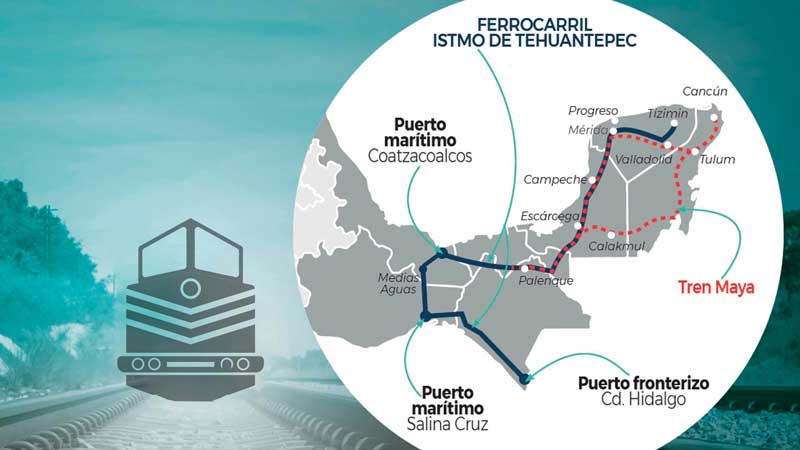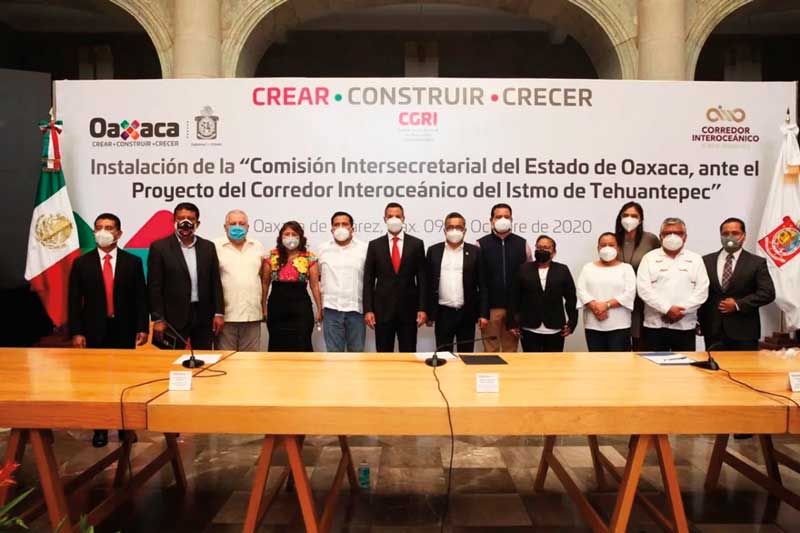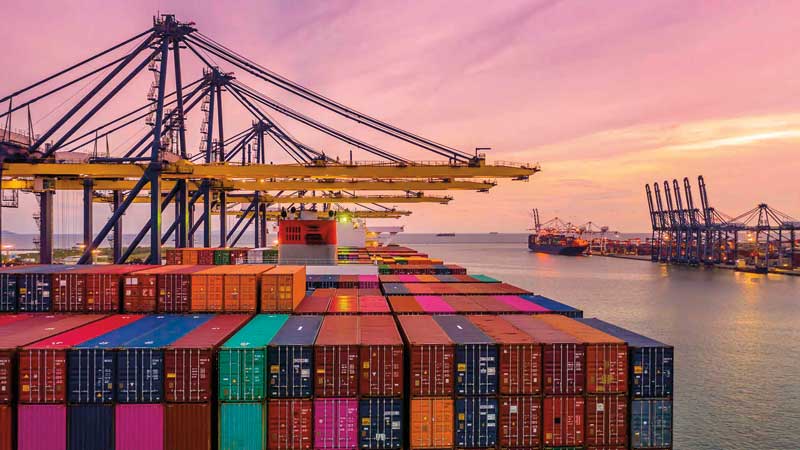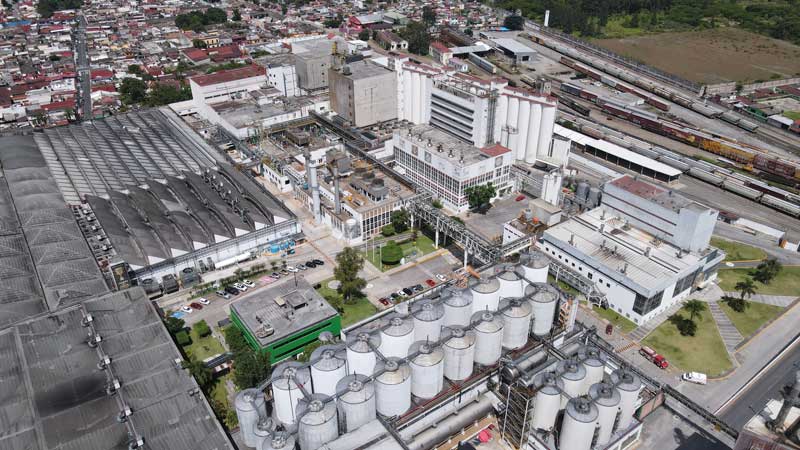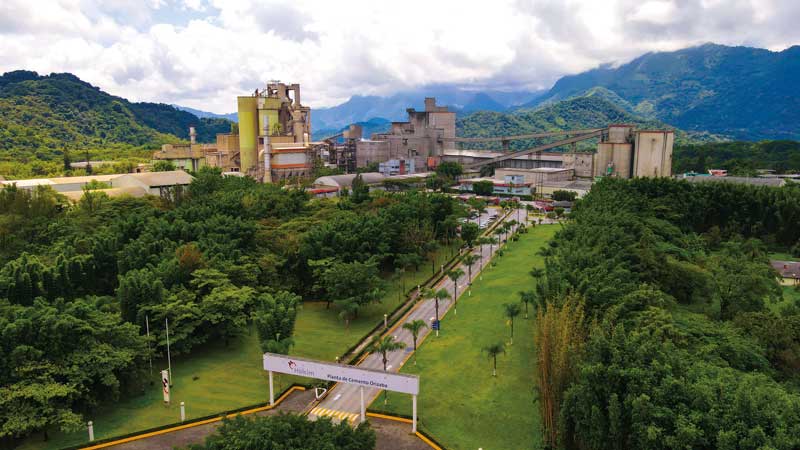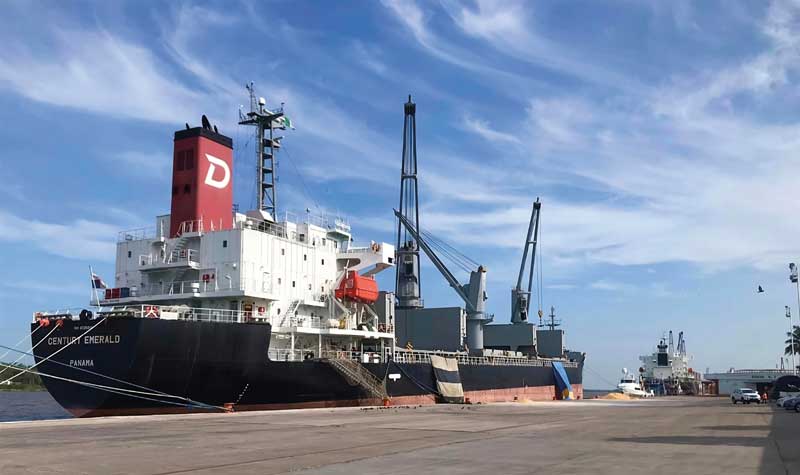Beyond different political, economic, and social systems, the world is increasingly globalized and interconnected. The concept of the "global village," coined by Herbert Marshall McLuhan in the late 1960s, is becoming increasingly real and multidimensional. Human interconnection, the virtual disappearance of distances, is no longer manifested only in information, as the Canadian philosopher observed, but also in knowledge, culture, economy, finances, and physical connectivity, that is, transportation.
Through this network of multiple communicating vessels, a small change can have a multiplier effect, sometimes even a logarithmic one: What happens in one place in the world has a maximized impact on the other end. Pure cultures, autarkic nations, and closed economies are either a voluntarist fiction or a footnote of the past.
Globalization also manifest itself in an incessant and fluid economic activity among different continents and different multinational economic blocs with different degrees of porosity, depending on the vocation of each country to subscribe or not to cooperation and free agreements.
Explained by Japanese economist Masahisa Fujita and Nobel Prize-winning economist Paul Krugman, the concept of New Economic Geography (NEG) refers to economic decisions of states and other components of society being made with consideration of geographical location. NEG helps us understand international economy through the microeconomic study of territories. By analyzing the regions of a country, i.e., economic geography, we can understand the growth and development of nations as well as their behavior.
STRATEGIC WEALTH
The privileged geographical location, the cultural richness, the of its flora and fauna, the forest resources, and the productive, commercial, and geopolitical advantages that have characterized the Isthmus of Tehuantepec, its network of strategic advantages, position it as a space of attraction, an opportunity to leap into the future to always keep in mind.
In summary, the strategic priority attributed to the Isthmus has been a recurring phenomenon in national history, from Hernán Cortés' seigniorial project to the present, through physical explorations of the of the viceregal government, the interventionist attempt by a faction of the North America government, the sovereign project conceived by Benito Juárez, the Porfirian policy of national investment and private concessions, the unfinished projects of post-revolutionary Mexico, those of the PAN alternation, and the most recent federal administration, until one of the projects, a process in progress, was provided with the three essential components: political will, the sum of efforts, and technical viability.
This is what this article is about, the history of multiple projects, some announced and other unfinished, of that potential strategic wealth that has never been detonated before and that todaym the core of the study, is in a solid process of construction and structural change.
Balanced development
We are talking about the long-awaited project of the "Interoceanic Corridor of the Isthmus of Tehuantepec," whose mission is to contribute to the development of the region and lay the foundations for comprehensive, sustainable, and inclusive development. A project of transversal vision and structural change that interrupts the long histori of Mexico as a country governed by an asymmetrical and distorted model of development, where, especially since the third decade of the 20th century, the different regions and states of the country haven been trated differently in the design and implementation of national development plans, sectoral plans, and specific public policies, in order to promote a North-Cetral region, including the Bajio region, that aspires to modernization, growth, and openness, and aSouth-Southesat region that is lagging behind in its main economic and social indicators: a formal federalism, not one of concrete content.
This reality of regional imbalance and social inequality is what we are trying to change with megaprojects like the Interoceanic Multimodal Corridor of the Isthmus of Tehuantepec: Today, Oaxaca is one of the states where labor income has grown the most, at 7.1%, and where the most employment has been generated, with an employment rate of 97%, growing by 4.5% compared to a national decline of 8.5%.
Taking advantage of corporate relocation
Large international companies are looking not only to reduce production costs and facilitate the transfer of goods, but also for supply chain security, a certainty safe from the imperatives of geopolitics, such as the U.S.-China trade confrontation and the Russia-Ukraine war, as well as protection against transportation problems inherent in unforeseen phenomena, such as the health challenge of the Covid-19 pandemic.
Indeed, in this recomposition of the world economy, the internationalization of production processes, with chains of components, inputs, and finished products that touch the five continents, increasingly favors geographical proximity and the consequent security of supply, which gives a huge comparative advantage to the factor of proximity of the Isthmus of Tehuantepec to the largest market in the world, the United States, especially for companies leaving China and Russia today, a phenomenon known as nearshoring.
The Economist defines nearshoring as the business of moving activities to countries that are fairly cheap and close, rather than very cheap and distant. One of the key factors in this strategy is to help companies choose locations that do not necessarily offer the greatest cost savings but are associated with lower risks.
Another decisive factor in the relocation process of large companies is the availability of energy, especially clean energy since new investments, considering timeframes of several decades ahead, require a secure and constant supply of energy generated from renewable sources, which is another comparative advantage of the Multimodal Interoceanic Corridor of the Isthmus of Tehuantepec.
In summary, no international project could better capitalize on the new stage of globalization in this third decade of the 21st century and beyond, the nearshoring, like the agile and secure crossing of capital, goods, and services, through the Isthmus of Tehuantepec.
COMPETITIVE ADVANTAGES
The main comparative advantage of the Interoceanic Corridor of the Isthmus of Tehuantepec, compared to the Panama Canal and other options such as land bridges crossing the North American territory, which will translate into a high level of competitiveness, is the possibility, the shorter tume and the consequent lower cost with which goods will be transported from one coast to another of the United States, as well as those originating from Asian countries destined to our main trading partner.
This is even more important in these new times of global capitalism, where centrifugal forces are increasingly prevail over centripetal forces, with supply chains that know no borders, cultures, or languages. With this new paradigm, manufacturers with international vision undermine their competitors and component manufacturers who stay at home.
The Isthmus of Tehuantepec can gradually become an important pole of development, driving the commercial activity of our country with the East Coast of the United States through logistical connectivity, generating economic growth through the attraction of Foreign Direct Investment (FDI) fostered by the global requirement for proximity of production chains (nearshoring), as well as social development, implementing public policies that integrate the southern southeastern region and allow for the reduction of infrastructure and service lags.
Therefore, in order to consolidate this important project, the following are considered necessary:
- Integration plan to the USMCA (target market): In order to maximize the benefits of the CIIT, it must be aligned with the objectives and regulatory framework established in the treaty signed with the United States and Canada, our maintrading partners.
- Master plan for development, infrastructure, and operation of each of the Development Poles (PODEBIS): Provide clarity and certainty to investors, which is essential to extend the period for granting tax incentives, considering the necessary time for the installation and start of operations of companies.
- Invest in the modernization of infrastructure and logistical services (energy, telecommunications, roads, ports, airports, railways): Logistical services should be operated by established companies with experience in the port and railway sectors.
- Prioritize investment in infrastructure and public services (potable and wastewater, health, education, security). Investment in infrastructure and public services should go hand in hand with investment in productive infrastructure, aiming to address social demands and generate welth for the population.
- Expand fiscal incentives and financial schemes to strengthen the local supply network, in order to meet the demand for inputs and services. Currently, there is no consolidated supply network in the region to provide the support needed by manufacturing companies. manufacturing companies.
- Implement regulatory improvements at the three levels of government to make administrative processes more transparent and streamlined.
- Social inclusion: Implement a comprehensive development policy and involve communities through their productive vocations. Mexico is a country with enormous productive potential; however, it has historically had an asymmetric and flawed development model that, with different six-year modalities, has created a contrasting national reality, with a North-Central pole oriented towards modernity, openness, and growth, and another pole, the South-Southeast, which, despite significant changes in recent years, has lagged behind in its main economic and social indicators: GDP, GDP per capita, life expectancy, health, education, and basic public services.
The different rates of development that the country has experienced are not an inevitable historical fate or a consequence of its contrasting geography and culture, but the result of development plans, sectoral plans, and specific public policies implemented by the Mexican state. For this reason, it is our firm conviction, supported by technical data, that new public policies, involving different political will, generate new realities.
One of the fundamental reasons for the significant improvement in the economic and social indicators of the state of Oaxaca is the investment in infrastructure projects, precisely what had been lacking in the past, such as the resumption of highways from the state capital to the Isthmus and the Coast regions; the modernization of the Salina Cruz refinery, and notably, the Interoceanic Multimodal Corridor of the Isthmus of Tehuantepec.
The Interoceanic Multimodal Corridor of the Isthmus of Tehuantepec, driven by the government of President Andrés Manuel López Obrador, together with the governments of the states of Oaxaca and Veracruz, is the first to have a comprehensive vision, broad social agreement, starting with consultation with indigenous communities, an executive plan, a strategic plan, and a conceptual master plan, an annually allocated budget, and ongoing tendering and operational works.
The Interoceanic Multimodal Corridor, which already has a solid foundation, is not a technocratic project: it will only achieve its ambitious and sustainable goals if it has, now and in the coming years, the participation and support of the federal government, the state and municipal governments of the region, as well as the legislature and the various private, social and community sectors.
Text:Alejandro Murat Hinojosa
Photo: ARMANDO MEDINA / ALIANZA / sociologo / EWLO / ADF / Secretaría de Desarrollo Económico y Portuario del Estado de Veracruz / ADF



